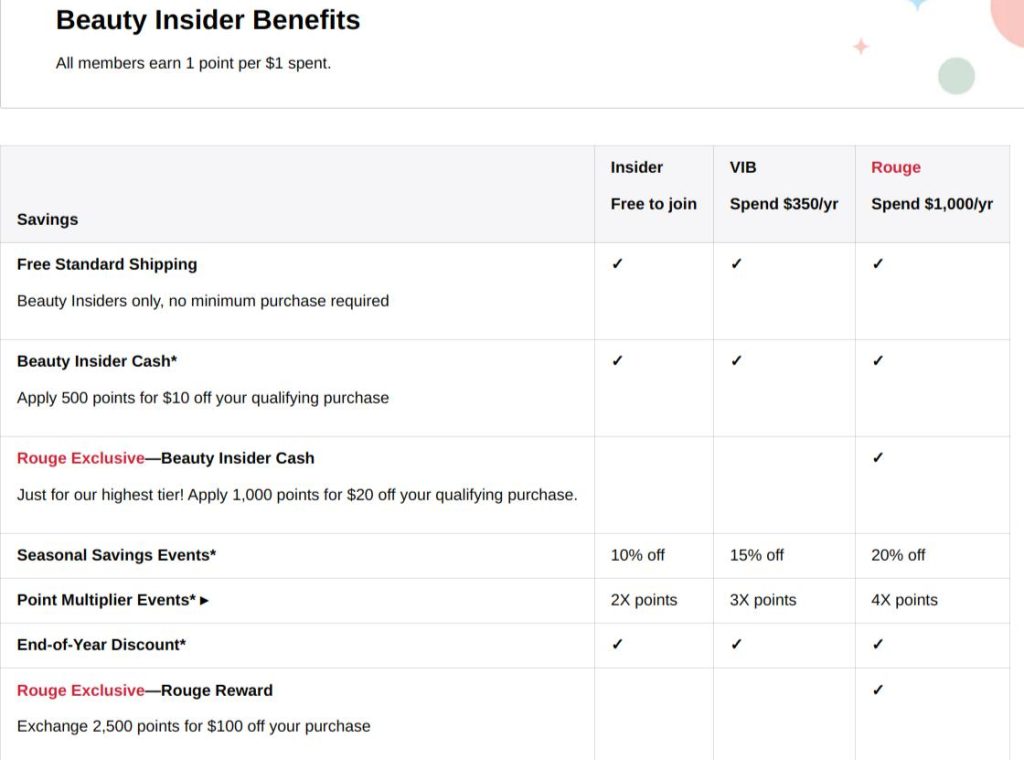When you’re looking to reduce cart abandonment, you realize it’s essentially online shoppers browsing without buying.
It’s frustrating when potential customers load up their shopping carts but disappear before completing their purchase. A proper recovery strategy requires confronting these difficult questions.
- What caused the checkout friction?
- Why did they show initial interest in your products?
- What made your offerings appealing enough to add to cart?
- What expectations did they have for the purchase process?
- Did your checkout experience match their shopping preferences?
- Which areas need your immediate attention?
Sadly, many businesses overlook this analysis and simply accept high abandonment rates as normal.
Since fixing problems early beats damage control later, here’s a detailed guide explaining cart abandonment fundamentals, prediction methods, and proven strategies to reduce cart abandonment, plus useful tools for tracking abandonment patterns effectively.
Increase your ROI upto 20X with WPLoyalty’s customizable loyalty campaigns and retain your customers with points and rewards.
What is Cart Abandonment?
Cart abandonment occurs when shoppers add products to their online shopping cart but exit without purchasing.
The calculation for cart abandonment rate is straightforward:
Cart Abandonment Rate = (1 – Number of completed purchases ÷ Number of initiated carts) × 100
Let’s say 100 shoppers created carts on your site, but only 65 completed their orders. Your abandonment rate would be 35%.
Reducing cart abandonment can massively boost your revenue and profit margins. Consider an online store receiving 1,200 monthly visitors with a 2.5% conversion rate, earning $60,000 monthly. Cutting your abandonment rate by just 12% could recover an extra $7,200 monthly. That’s $86,400 additional annual revenue.
In another scenario, imagine slashing your abandonment rate by 30%. This could mean an extra $18,000 monthly, totaling $216,000 yearly.
Cart Abandonment Benchmarks Across Different Sectors
- Overall e-commerce experiences abandonment rates around 70.19%
- Clothing and accessories see abandonment at 68.1%
- Travel booking sites face rates near 83.6%
- Consumer electronics average about 69.4%
- Food delivery platforms experience roughly 66.8%
- Mobile shopping typically shows abandonment exceeding 87%
How to Predict Cart Abandonment?
Cart abandonment isn’t a spontaneous occurrence. Shoppers abandoning their carts represents the final result of accumulated friction throughout their shopping experience.
Typically, customers encounter barriers or develop doubts during their journey before deciding to exit without purchasing.
Before abandoning their cart, shoppers usually display particular behaviors indicating they’re struggling with their purchase decision.
Related reading: Here are the best WooCommerce abandon cart recovery plugins to help you discover the best picks.
Key Warning Signs of Impending Cart Abandonment
“Cart abandonment occurs when there’s a mismatch between shopper expectations and the actual checkout reality”.
– E-commerce Analytics Expert
Understanding these signals allows businesses to intervene with targeted strategies to reduce cart abandonment.
Here are critical cart abandonment predictors your online retail team should monitor:
1. Browsing Patterns and Session Duration
Cart abandonment frequently follows unusual browsing behavior on checkout pages. Shoppers spending excessive time on payment or shipping pages, or constantly switching between cart and product pages, demonstrate purchase uncertainty.
Red flags include customers repeatedly viewing the same products after adding them to cart, suggesting buyer’s remorse or second thoughts.
2. Price Research Activities
Every online business faces competitive pressure. When customers open competitor tabs or leave your site for price comparisons after filling their cart, they’re likely shopping around and at significant abandonment risk.
3. Sticker Shock at Checkout
When your final pricing fails to meet customers’ budget expectations, cart abandonment likelihood increases dramatically. Regular analysis of checkout drop-off points through analytics, user recordings, or feedback surveys is essential.
4. Checkout Form Struggles
This encompasses incomplete form submissions, excessive time per field, and frequent error encounters. These factors significantly impact purchase completion probability. Customers repeatedly clicking between fields without progress signals major friction.
5. Payment Processing Issues
Payment flexibility directly correlates with completion rates across different payment methods. Consider these critical questions:
- Do customers bail when seeing limited payment choices?
- Which payment options do your competitors provide?
- Are regional payment restrictions blocking transactions?
- Does your payment processing experience delays?
- How intuitive does your checkout flow feel to users?
Identifying potential abandoners enables you to address issues proactively, solve problems quickly, and recover their business.
Systematic approaches to finding at-risk shoppers and engaging them meaningfully impact conversion performance.
Categorizing Different Types of Cart Abandonment
Shoppers abandon carts for various reasons. Conducting a thorough abandonment analysis using the indicators mentioned helps you anticipate abandonment triggers and reduce their occurrence.
However, some abandonment situations resist mitigation efforts. Here’s how to categorize different abandonment types:
1. Unavoidable Abandonment
Unavoidable cart abandonment happens when circumstances beyond immediate control prevent purchase completion. Recovery efforts prove challenging with these customers. Focus on understanding their departure reasons first.
Unavoidable cart abandonment causes include:
- Window shopping without genuine purchase intent
- Unexpected budget limitations
- Technical difficulties – connectivity issues or device malfunctions
- Competitive research leading to better alternatives
- External interruptions disrupting the purchase process
2. Preventable Abandonment
This happens when customers abandon carts due to controllable factors within your business. These shoppers typically intended to buy but encountered obstacles during checkout. Concentrate most recovery resources on this segment since their conversion probability remains high.
Common preventable cart abandonment triggers:
- Hidden shipping costs appearing only at checkout
- Overly complex or lengthy purchase processes
- Missing security badges and trust indicators
- Insufficient payment method variety
- Mandatory account registration requirements
- Poor mobile shopping experience
- Absence of guest checkout options
- Excessive total costs (shipping, taxes, processing fees)
- Vague return and exchange policies
- Technical glitches or slow site performance
- Unavailable customer service during checkout
- Missing product details or customer feedback
Understanding what percentage of abandonment stems from preventable causes is vital. Investing in checkout optimization platforms helps align and develop your recovery strategies effectively.
Let’s explore the most effective methods for reducing cart abandonment.
10 Proven Methods to Reduce Cart Abandonment
The 11 best methods to reduce cart abandonment:
1. Display complete pricing upfront
Hidden costs represent the leading cause of cart abandonment – surprise expenses appearing only during checkout. Many e-commerce sites conceal shipping charges, taxes, and additional fees until customers reach the final step.
This pricing deception starts on product pages and causes significant long-term damage to customer trust.
Why do online retailers hide costs? Several motivations drive this practice:
- Fear that higher displayed prices will deter initial interest
- Attempts to appear more competitive in price comparisons
- Belief that invested customers won’t abandon over additional costs
- Assumption that customers expect some additional charges
- Desire to rank higher in price-focused search results
Instead, to reduce cart abandonment, display comprehensive pricing as early as possible.
Customers seeing complete costs from the beginning develop realistic expectations throughout their shopping experience.
This foundation leads to customer loyalty and reduced abandonment rates.
2. Perfect your checkout page first impression
Creating seamless checkout experiences represents the most effective way to reduce cart abandonment and ensure purchase completion.
Customers typically form checkout opinions within seconds of arrival. During this brief window, they evaluate your process based on simplicity, security, speed, trustworthiness, clarity, professional appearance, and navigation ease.
These factors lead customers to one of three checkout impressions:
- Confidence in the process encourage continuation
- Distrust in the process triggering abandonment consideration
- Uncertainty and hesitation about proceeding
Distrust obviously damages conversions. But uncertainty proves equally harmful for completion rates. Hesitant customers begin checkout reluctantly and abandon at the first sign of complexity.
How do we address this?
- Design smooth, confidence-inspiring checkout experiences immediately – this strategy effectively reduces cart abandonment.
- Display security certifications, show clear progress indicators, and create a secure, straightforward process feel.
When first impressions emphasize trust and simplicity, smooth conversion processes begin and abandonment rates decrease.
3. Implement strategic loyalty program incentives
One of the effective ways to reduce cart abandonment is to create loyalty programs and reward your customers. It motivated them for purchase completion.
Why do loyalty programs reduce cart abandonment? Several psychological factors drive their effectiveness:
- Loss aversion: customers fear missing exclusive member pricing or rewards
- Progress motivation: visible point accumulation creates completion desire
- Status reinforcement: VIP treatment makes customers feel valued
- Future value perception: upcoming rewards justify immediate purchases
- Social proof: membership signals belonging to an exclusive community
Successful loyalty program integration for cart abandonment prevention includes strategic timing and compelling offers.
Sephora implements this strategy – their Beauty Insider program have many perks including points and rewards that will initiate repeat purchases.

For maximum cart abandonment reduction, implement these loyalty program strategies:
- Prominently display exclusive member pricing during checkout
- Offer bonus loyalty points for completing abandoned cart purchases
- Show progress toward tier-based loyalty loyalty programs.
- Provide early access to sales or limited-edition products for members
- Create referral programs to encourage participation.
- Send personalized loyalty reward reminders in cart recovery emails
Loyalty programs work best when they solve actual customer pain points while creating additional purchase motivation.
Prevent your customers from cart abandonment by providing points and rewards using WPLoyalty’s easy-to-use loyalty programs.
4. Create persuasive cart recovery campaigns
Most businesses send cart abandonment emails, but they’re typically generic and ineffective. Standard “You left something behind” messages don’t convey meaningful communication.
People receive countless generic abandonment emails and ignore typical “Finish your order” messages. For reducing cart abandonment, make communications more personalized and compelling.
Warby Parker implemented an innovative approach to reduce cart abandonment – they began sending personalized eyewear advice emails:

Their emails feature product imagery, create urgency through limited-time offers, and provide styling suggestions – far superior to basic text reminders.
These valuable emails gained customer appreciation – Warby Parker reduced abandonment rates by 18% within three months by providing value beyond simple cart reminders.
5. Continuously reinforce product benefits
Time delays between cart addition and purchase can cause customers to forget their initial motivation. Additionally, competitors constantly present alternative products competing for their attention.
You must consistently remind customers of your products’ value propositions throughout their purchase journey. Take deliberate actions to maintain appeal. Here’s how to ensure reduced abandonment:
- Cart recovery communications should emphasize abandoned products’ key features and benefits
- Demonstrate how products solve their specific problems or fulfill particular needs
- Include customer testimonials and reviews for their specific cart items
- Create urgency through limited availability or time-sensitive promotions
- Additionally, incorporate product demonstrations and videos to strengthen value perception
Consistently remind them these products will enhance their lives meaningfully. Your responsibility includes reinforcing their purchase decisions continuously.
6. Monitor competitor checkout experiences
How do you reduce cart abandonment while improving customer perceptions of your checkout process?
Through benchmarking your checkout performance against competitors. Continuously measuring your checkout flow against industry leaders motivates your team to optimize every element.
The key question becomes – which aspects should you benchmark to reduce abandonment?
E-commerce research identifies four critical checkout satisfaction drivers:
- Processing speed (loading performance and workflow efficiency)
- Simplicity (required steps and form complexity)
- Trust indicators (security certifications and payment variety)
- Transparency (clear pricing and policy communication)
For serious competitive analysis, tools like Mouseflow provide excellent options. These user experience platforms show exactly how customers interact with your checkout compared to industry standards.
7. Gather abandonment feedback actively
This represents one of the simplest yet most effective cart abandonment prevention methods. E-commerce research shows businesses actively collecting abandonment feedback achieve 28% better recovery rates than those that don’t.
Consumer psychology research indicates that simple exit surveys appeal to customers’ desire for voice, potentially re-engaging them with your brand and increasing return likelihood for purchase completion.
Simply asking departure reasons helps people reconsider their decisions and evaluate whether issues can be resolved. They might realize their concerns aren’t as significant as initially perceived.
For reducing cart abandonment, feedback collection provides valuable checkout friction insights. Customers reveal exactly what prevented purchase completion – information enabling checkout process optimization.
This process doesn’t end there. To reduce abandonment, collect feedback and implement actual checkout improvements based on insights. This creates opportunities to demonstrate genuine concern for customer input.
Even better when you can follow up with improvements – emails informing customers about fixes for their mentioned issues, perhaps including small discounts encouraging retry attempts.
8. Prioritize mobile shopping optimization
Many businesses mistakenly optimize only desktop checkout experiences, investing minimal effort in mobile optimization. Neglecting mobile shoppers proves extremely costly.
Recent research shows mobile commerce generates over 54% of e-commerce traffic, yet mobile checkout conversion rates typically lag desktop by 3x due to poor optimization.

Imagine attracting mobile traffic to your site but losing customers during checkout due to poor mobile experiences. The result: high traffic volumes but disappointing conversions.
This represents significant waste. You cannot assume mobile checkout functions identically to desktop. Smaller screens require different optimization strategies.
For reducing cart abandonment, mobile optimization dramatically improves conversion performance. Prioritizing mobile-first checkout design always pays dividends.
Several effective mobile optimization approaches include:
- Single-column layouts optimized for small screens
- Mobile-specific payment integration like Apple Pay and Google Pay
- Reduced form fields with auto-complete functionality
- Touch-friendly button sizing for interaction ease
- Mobile network loading speed optimization
- Regular checkout testing across multiple mobile devices
Most importantly, ensure your mobile checkout experience surpasses your desktop version, since mobile users typically show less patience for friction.
9. Identify and eliminate checkout friction
No checkout process achieves perfection. Regardless of how streamlined your flow appears, some elements create more friction than others – these are your conversion killers.
Following the principle that ‘conversion rates equal your weakest checkout step performance’, identifying friction points and eliminating them becomes imperative.
Two critical aspects require investigation:
- Precise abandonment locations during checkout
- Specific elements causing hesitation or confusion
Analytics tools tracking customer checkout drop-off points are essential. Typically, you’ll discover common abandonment locations affecting most customers.
Heat mapping tools and session recordings help identify exact customer struggle points during checkout.
Without knowing friction points, optimization becomes impossible. Many companies have dramatically improved conversions by addressing simple checkout issues.
Zappos revolutionized online shoe shopping by offering free returns, eliminating the major friction point of sizing uncertainty.
For reducing cart abandonment, remember that identifying and eliminating friction points is essential for optimization success.
10. Deploy exit-intent intervention technology
Exit-intent popups detect when users prepare to leave your checkout page and present last-chance offers or assistance opportunities.
This technology helps customers resolve concerns before abandoning. Well-designed exit-intent offers enable immediate help with questions or concerns that might otherwise cause abandonment.
Exit-intent surveys can also reveal why customers leave, providing valuable optimization data for your checkout process. While not guaranteed to prevent every abandonment, they effectively recover fence-sitting customers.
Exit-intent technology provides additional opportunities to address customer concerns, helping prevent cart abandonment.
Get started with WPLoyalty’s pre-built loyalty campaigns and reduce cart abandonment rates by rewarding customers.
Final Thoughts
While some cart abandonment will always occur regardless of your efforts, never accept it as ‘normal e-commerce behavior’ and remain passive. The bigger problem emerges when you’re not actively working to reduce cart abandonment.
Ignoring high abandonment rates significantly impacts revenue and growth potential.
Always monitor checkout analytics for early warning signals, and take immediate action when identifying friction points so you can optimize experiences, build trust, and increase conversion rates.
Frequently Asked Questions
Display complete pricing upfront, optimize mobile checkout, simplify the purchase process, offer multiple payment options, and implement exit-intent popups to address customer concerns immediately.
Identify friction points through analytics, send personalized cart recovery emails, provide guest checkout options, show security badges, and continuously optimize your checkout flow based on customer feedback.
Common causes include hidden costs, complex checkout processes, limited payment methods, poor mobile experience, security concerns, mandatory account registration, and unexpected shipping charges appearing late.
Personalized email campaigns with product images, urgency offers, and clear value propositions prove most effective. Follow up within 24 hours with compelling reasons to complete purchase.
